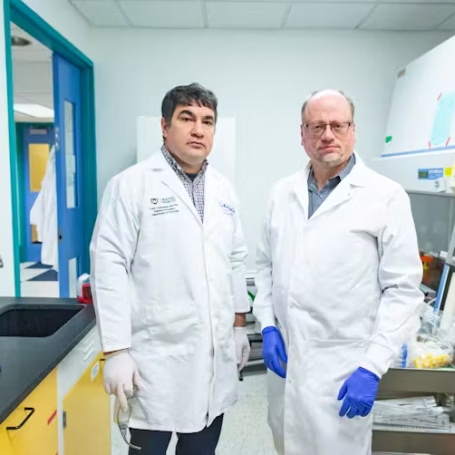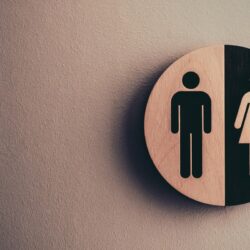Science Communication in the Age of Polarization
At their annual meetings last month, leaders of the American Association for the Advancement of Science (AAAS) urged their members to advocate on behalf of federal funding for scientific research, actions to address climate change and other issues.
The public should know “how science works and what is needed to sustain it,” said incoming AAAS CEO and former Democratic Congressman Rush Holt, a physicist by training.
The call to focus on communication and outreach is the latest in a trend that has swept the scientific community over the past decade as scientists and their organizations seek greater influence with the public and lawmakers.
To better understand this shift, in a just published study, my co-author Ezra Markowitz and I assessed the factors shaping AAAS member political awareness and communication behaviors based on data from a 2009 Pew Research Center survey.

Matthew C. Nisbet and Ezra M. Markowitz’s study appears as part of the March special issue of the Annals of the American Academy of Political and Social Science which examines “The Politics of Science: Political Values and the Production, Communication, and Reception of Scientific Knowledge.”
Collected during the months immediately following President George W. Bush’s departure from office, our analysis of the Pew data allowed us to evaluate how AAAS members learned about efforts by the Bush administration to interfere with the work of government scientists, and how this awareness may have influenced AAAS members’ outreach to journalists and the public.
Apart from any political motivations to engage the public, we were also able to identify other personal, professional, and organizational factors that shape the communication activities of AAAS members.
Who are AAAS members?
With a $100 million annual budget, AAAS is among Washington, DC’s best resourced and most influential advocacy groups.
The organization publishes Science magazine and a related family of journals, lobbies Congress to boost research funding, stakes out specific policy positions, and administers programs intended to influence public opinion, media coverage and policymaker decisions.
There are no qualifications or specific credentials required to become a AAAS member, and any individual can join by paying a $155 fee (there are discounts for students and retirees).
According to the AAAS web site, membership is “open to all individuals who support the goals and objectives of the Association and are willing to contribute to the achievement of those goals and objectives.” The organization counts more than 120,000 members worldwide.
Based on the most recent available Pew figures, 72% of US-based AAAS members are male (compared to 50% of the public), 83% are white (compared to 60% of the public) and 72% hold a PhD or doctorate.
Among AAAS members, 35 percent are 65 or older (compared to 24 percent of the public) with a median age of 59. Nearly a quarter of AAAS members are retired. Among those members who are employed full time, 58 percent work for a university or college, 21 percent business or industry, 10 percent government and 9 percent for a non-profit organization.
On the whole, AAAS members are strongly left-leaning and politically like-minded. In 2009, more than half self-identified as either liberal or very liberal, only roughly a third as moderate, and just 9 percent as conservative.
AAAS membership also has a strong partisan skew with 55 percent identifying as a Democrat, 32 percent as independent, and only 6 percent as Republican.
The like-minded political outlook of AAAS members is consistent with broader trends towards ever greater ideological self-segregation and polarization in U.S. society.
Yet even so, as the figure below depicts, in comparison to other social groups for which Pew data is available, AAAS members rank among the most like-minded.

Ideological and Partisan Like-Mindedness: Comparison of AAAS Members to Other Social Groups. Click to view
Nisbet, M.C. (2011). Climate Shift: Clear Vision for the Next Decade of Public Debate. Washington, DC: American University, School of Communication.
The politically homogeneous environment in which AAAS members associate and work likely plays a primary role in how they form judgments about policy issues and pay differential attention to some political debates over others.
Ideology and selective perceptions may also influence AAAS members’ motivations to engage in public outreach and advocacy.
Selectively following politics
To test these possibilities, in our analysis of the 2009 Pew data, we began by examining AAAS members’ differential use of science-related blogs as a source of information and how blog reading along with other factors may have shaped their awareness of the Bush administration’s interference with government scientists.
According to our findings, liberal AAAS members, after controlling for a range of influences, were substantially more likely than their moderate and conservative counterparts to be frequent science blog readers.
Similarly, those AAAS members who believed that media coverage was important for career advancement, who were motivated to work for the public good, and who spent more time on teaching were also more likely to read science blogs.
Turning to political awareness, after all controls, by a considerable margin, the strongest predictors of whether or not a AAAS member followed the debate over Bush interference were ideology, opinion intensity, and blog reading.
Specifically, the more serious a problem that a AAAS member perceived climate change to be, the more liberal they were in political outlook, and the more frequently they read science blogs, the more likely they were to have heard about Bush interference.
The substantial differences in awareness of Bush interference by ideology are plotted in the figure below. The differential pattern of awareness suggests that liberal AAAS members were more motivated to seek out media coverage and commentary about the debate (and to recall such information.) They were also likely exposed to discussion of the debate via like-minded peers and social media.

Awareness of Bush Administration Intereference. Click to view.
Nisbet, M.C. & Markowitz, E. (2015). Expertise in an Age of Polarization: Evaluating Scientists’ Political Awareness and Communication Behaviors. Annals of the American Academy of Political and Social Science, 658, 136-154.
Motivations to communicate
Analyzing the 2009 Pew data, we next examined the factors shaping the frequency with which AAAS members talked to reporters, engaged with nonscientists, or wrote for a blog. Yet in this case, unlike attention to the debate over Bush interference, we do not find that ideology, partisanship, or opinion intensity were predictive of AAAS members’ communication activities.
Instead, the strongest and most consistent predictor of all three communication-related activities was the belief by a AAAS member that media coverage was important for career advancement.
To a lesser degree, those AAAS members who frequently read science blogs as well as those working in the geosciences (who were about 6 percent of the sample) were also more likely to engage in all three of the media and communication activities.
In the case of geoscientists, because of their expertise relative to climate change and energy, as the Bush era came to a close, these experts may have felt more of a duty to engage in outreach and/or they may have been called on more frequently for information by the media and the public.
In terms of other factors, a desire to work on behalf of the public interest was also an important predictor motivating outreach to journalists and nonscientists (but not writing for a blog).
Assessing political involvement
A few key conclusions from our findings are important to note, as are possible directions for future research.
Similar to the general population, blog reading among AAAS members appears to promote civic involvement, though research should examine more closely whether this relationship still holds true today. Other forms of social media use such as Twitter should also be examined.

This article by Matthew Nisbet originally appeared at The Conversation, a Social Science Space partner site, under the title “Inside America’s science lobby: What motivates AAAS members to engage the public?”
A recent study suggests that those researchers who talk to journalists and also frequently Tweet about their work, gain more notice from other scientists, boosting their citation impact.
To better understand how AAAS members and scientists directly participate in politics, future surveys should ask specifically about donations to political groups and candidates; the writing of op-eds and letters to the editor; their volunteering in support of political candidates or causes; and their participation in protests or demonstrations.
With these activities, in contrast to the more general communication behaviors assessed in our study, future studies may find that ideology, partisanship, and issue-specific opinion intensity play significant roles.
Researchers should also more carefully evaluate scientists’ understanding of the different roles they can play in the policymaking process and how an individual’s specific role conception influences their communication activities and political engagement.
Do scientists consider themselves to be passive and neutral responders to requests for information from the public and decision-makers? Do they alternatively view themselves in a proactive role as issue advocates promoting a specific set of preferred policies and political outcomes? Or do they define their role as advisers helping to expand the portfolio of policy options considered by decision-makers and the public?
Going beyond the media
Today, across fields, enthusiastic AAAS members along with other scientists and related professionals are enrolling in communication skills courses where they are instructed on how to blog, use Twitter, make online videos, create visual presentations, employ Hollywood acting techniques, and cultivate relationships with journalists.
According to the most recent Pew survey of AAAS members, more than a third said that media coverage is important or very important for their career advancement and about a ¼ said the same about social media promotion.
Half of those members polled reported talking to reporters about research findings, and a similar proportion said they use social media to discuss or follow science. About a quarter said they blog about science.
Yet as outgoing AAAS CEO Alan Leshner recently argued, localized face-to-face engagement may be the most effective way for AAAS members, scientists, and their organizations to engage the public.
In this regard, scientists and related professionals can serve as trusted opinion-leaders in their communities, taking the opportunity to informally talk with friends, neighbors, and civic leaders about issues like climate change or science education.
Indeed, the focus on the local might be most relevant to scientists and professionals working at public and land grant universities which are chartered and funded to serve the needs of their states and regions.
With this in mind, as the University of Wisconsin-Madison’s Dominique Brossard noted during a panel at the recent AAAS meetings, future research should examine specifically the communication activities of scientists and related professionals at public and land grant universities, emphasizing the implications for effectively engaging their local communities and states.![]()






























































































